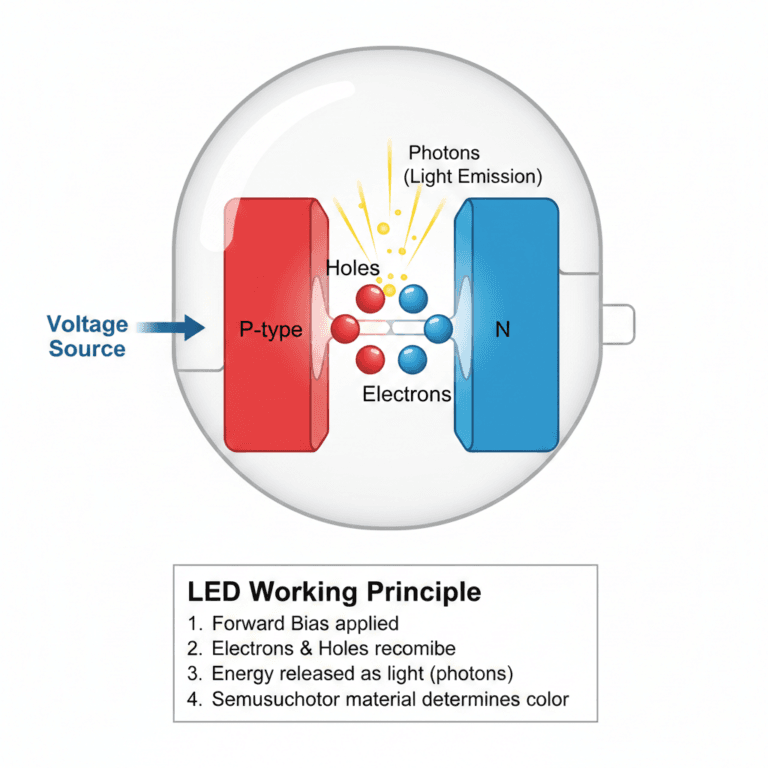
Working Principal of an LED
The working principal of an LED (Light Emitting Diode) is based on a phenomenon called electroluminescence, which is the emission of light from a material when an electric current is passed through it. LEDs are semiconductor devices that convert electrical energy directly into light without the need for heating a filament, as in incandescent bulbs. Here’s how an LED works:
Semiconductor Material: LEDs are made from semiconductor materials, typically gallium arsenide (GaAs), gallium phosphide (GaP), or gallium nitride (GaN). These materials have unique electronic properties that enable them to emit light when electrons recombine with holes.
P-N Junction: An LED consists of two different regions within the semiconductor material: the p-type region (positively charged) and the n-type region (negatively charged). The boundary between these two regions is called the p-n junction.
Energy Band Diagram: At the p-n junction, there is a potential energy barrier between the electrons in the n-region and the holes in the p-region. When a forward voltage (positive voltage at the anode and negative voltage at the cathode) is applied to the LED, the electrons from the n-region move toward the p-region, and the holes from the p-region move toward the n-region.
Recombination: As the electrons move across the p-n junction, they recombine with the holes. During this recombination process, the electrons lose energy, and this energy is released in the form of photons (light).
Emission of Light: The released photons have specific wavelengths depending on the energy bandgap of the semiconductor material. This determines the color of light emitted by the LED. For example, GaAs-based LEDs emit infrared light, while GaP-based LEDs emit visible light in various colors, and GaN-based LEDs emit blue or green light.
Light Extraction: The light generated within the semiconductor material needs to be extracted efficiently to produce useful illumination. The LED package is designed to maximize light extraction and direct the light output in the desired direction.
Continuous Operation: As long as a forward voltage is applied to the LED, the recombination process continues, and the LED emits light. LEDs can operate efficiently and emit light continuously for thousands of hours.
Overall, the working principle of an LED involves the controlled flow of electrons and holes across the p-n junction in a semiconductor material, leading to the emission of light. LEDs are known for their high energy efficiency, long operational life, and wide range of colors, making them a popular choice for various lighting applications.
Contact Ideal Lighting for more details.
